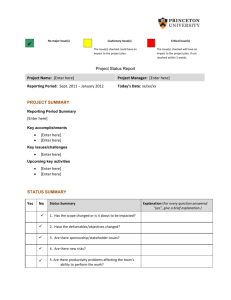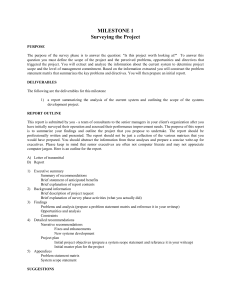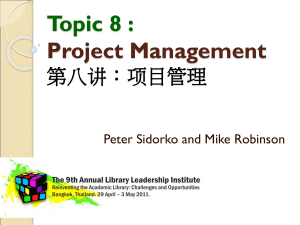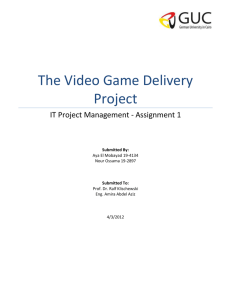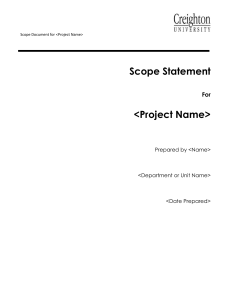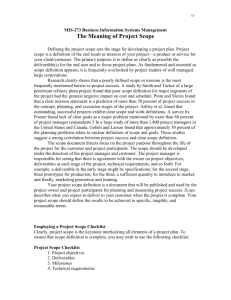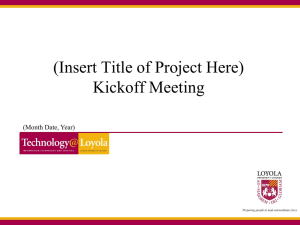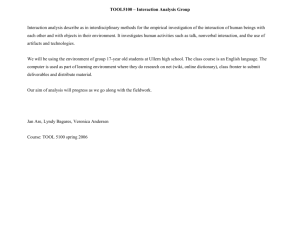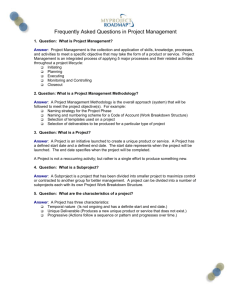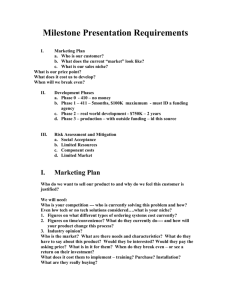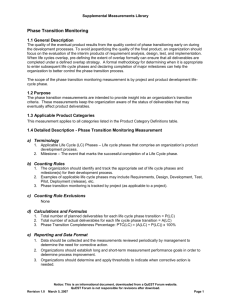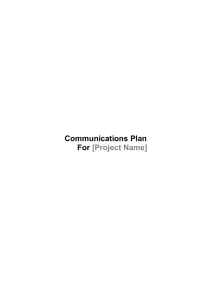Extended Proposal Format - Winona State University
advertisement
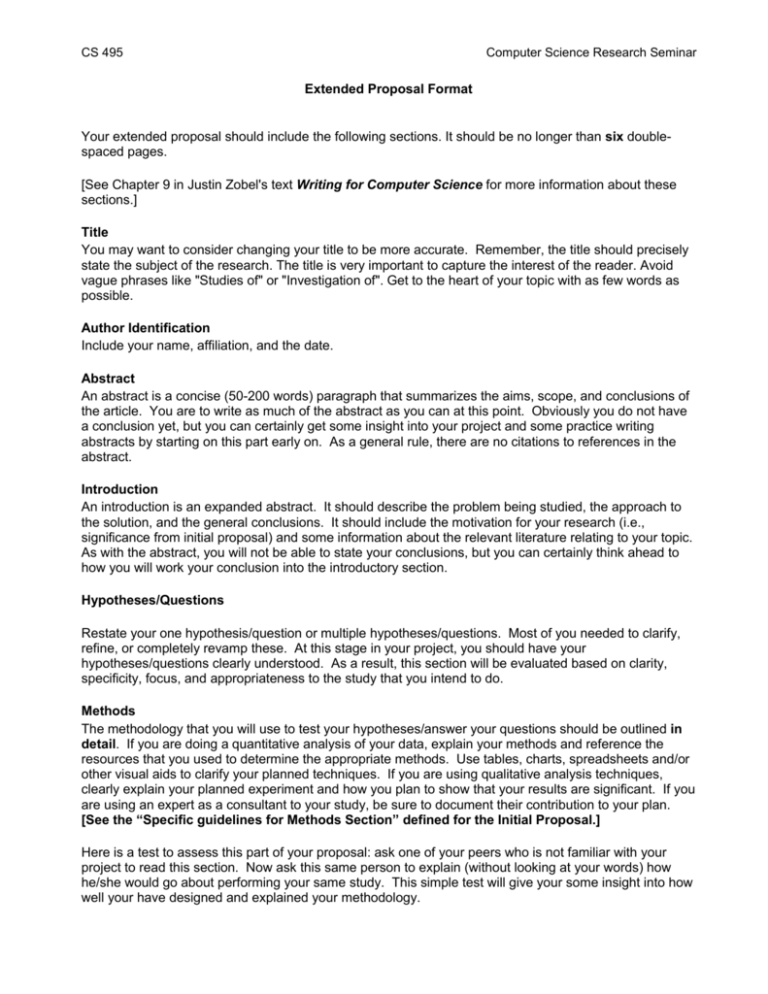
CS 495 Computer Science Research Seminar Extended Proposal Format Your extended proposal should include the following sections. It should be no longer than six doublespaced pages. [See Chapter 9 in Justin Zobel's text Writing for Computer Science for more information about these sections.] Title You may want to consider changing your title to be more accurate. Remember, the title should precisely state the subject of the research. The title is very important to capture the interest of the reader. Avoid vague phrases like "Studies of" or "Investigation of". Get to the heart of your topic with as few words as possible. Author Identification Include your name, affiliation, and the date. Abstract An abstract is a concise (50-200 words) paragraph that summarizes the aims, scope, and conclusions of the article. You are to write as much of the abstract as you can at this point. Obviously you do not have a conclusion yet, but you can certainly get some insight into your project and some practice writing abstracts by starting on this part early on. As a general rule, there are no citations to references in the abstract. Introduction An introduction is an expanded abstract. It should describe the problem being studied, the approach to the solution, and the general conclusions. It should include the motivation for your research (i.e., significance from initial proposal) and some information about the relevant literature relating to your topic. As with the abstract, you will not be able to state your conclusions, but you can certainly think ahead to how you will work your conclusion into the introductory section. Hypotheses/Questions Restate your one hypothesis/question or multiple hypotheses/questions. Most of you needed to clarify, refine, or completely revamp these. At this stage in your project, you should have your hypotheses/questions clearly understood. As a result, this section will be evaluated based on clarity, specificity, focus, and appropriateness to the study that you intend to do. Methods The methodology that you will use to test your hypotheses/answer your questions should be outlined in detail. If you are doing a quantitative analysis of your data, explain your methods and reference the resources that you used to determine the appropriate methods. Use tables, charts, spreadsheets and/or other visual aids to clarify your planned techniques. If you are using qualitative analysis techniques, clearly explain your planned experiment and how you plan to show that your results are significant. If you are using an expert as a consultant to your study, be sure to document their contribution to your plan. [See the “Specific guidelines for Methods Section” defined for the Initial Proposal.] Here is a test to assess this part of your proposal: ask one of your peers who is not familiar with your project to read this section. Now ask this same person to explain (without looking at your words) how he/she would go about performing your same study. This simple test will give your some insight into how well your have designed and explained your methodology. CS 495 Computer Science Research Seminar References List At least five correctly cited references that are specific to your background study and research. Evaluation of your references will be based on: Validness of references (refereed? scholarly journal or book?) Timeliness of references Specificity of references to your research Citation technique (use the standards discussed in class) Note! Please do not cite a search engine or digital library web site as a reference. That's like saying "Go look for some references yourself." Timeline (i.e., Self Management Plan) Use a spreadsheet or some kind of time management software to lay out a detailed schedule for completing your project on time. Following is a list of external deliverables (to someone other than you) and some example internal deliverables. You should schedule both external and internal deliverables in your timeline. Also, leave yourself some “catch-up” time, in case some part(s) of your schedule take longer than expected. External deliverables are as follows: Milestone 1 - Extended proposal - Due February 8 Milestone 2 - Progress Report - Due February 27 Milestone 3 - First full draft - Due March 29 Milestone 4 - Final paper - Due April 12 Conference Version of paper - Due April 16 Internal deliverables (you may have some or all of these) Code completion Background research completion Survey composition completion Survey delivery Survey collection Experiment setup completion Experiment runs completion Experiment analysis completion Work your plan around your own schedule. Put some time into your plan and then stick with it. Good luck.
